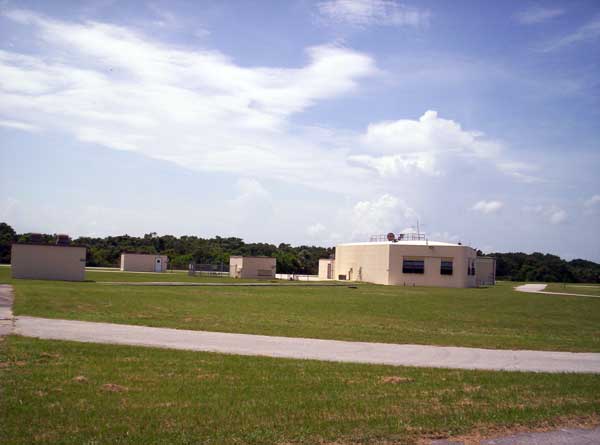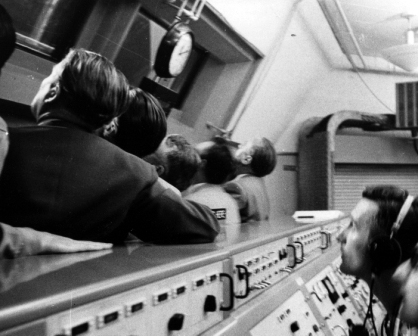
Photo Gallery
Exhibit Overview
Next to Launch Complex 26 is Complex 5/6, pronounced “complex five six” or “complex fifty-six”, where Redstone, Jupiter and Juno missiles were launched.
Mercury Flights
This complex is also the launch site of the early Mercury flights. The restored blockhouse (left) was used during the earliest Project Mercury flights. Mercury-Redstone 3 (MR-3) on 5 May 1961 was the first manned launch by the United States with Alan Shepard on board.
This was followed on 21 July 1961 by MR-4 with Gus Grissom. Both of these flights were launched from Pad 5 and flew sub-orbital missions downrange.
Name Origin
The unusual designation of this complex as “5/6” with a slant bar separator (also sometimes seen as “56” with no slant bar) derived from the early practice of naming the launch complex after the pad number. Each early launch complex had a single pad, so there was no ambiguity over the designation. Launch Complex 1 hosted launch pad 1, Launch Complex 2 hosted launch pad 2, and so on. Launch Complex 5/6, however, hosted two launch pads on a single complex which resulted in the launch complex inheriting the designation of both launch pads, 5 and 6.
A later naming practice settled on a numeric designator for the launch complex with an alphabetic pad designator if there happened to be more than one launch pad within the launch complex. This naming scheme resulted in designations of Pad 26A and 26B on Launch Complex 26, part of the Air Force Space and Missile Museum.
The interior of the blockhouse contains much of the original equipment that was used to launch the Mercury Redstone flights.
Related Pages:
- Launch Complex 5/6 Launch Pads Exhibit
- CCSFS Launch Complex 5/6
- Redstone Exhibit
- USAF Space and Missile Museum


